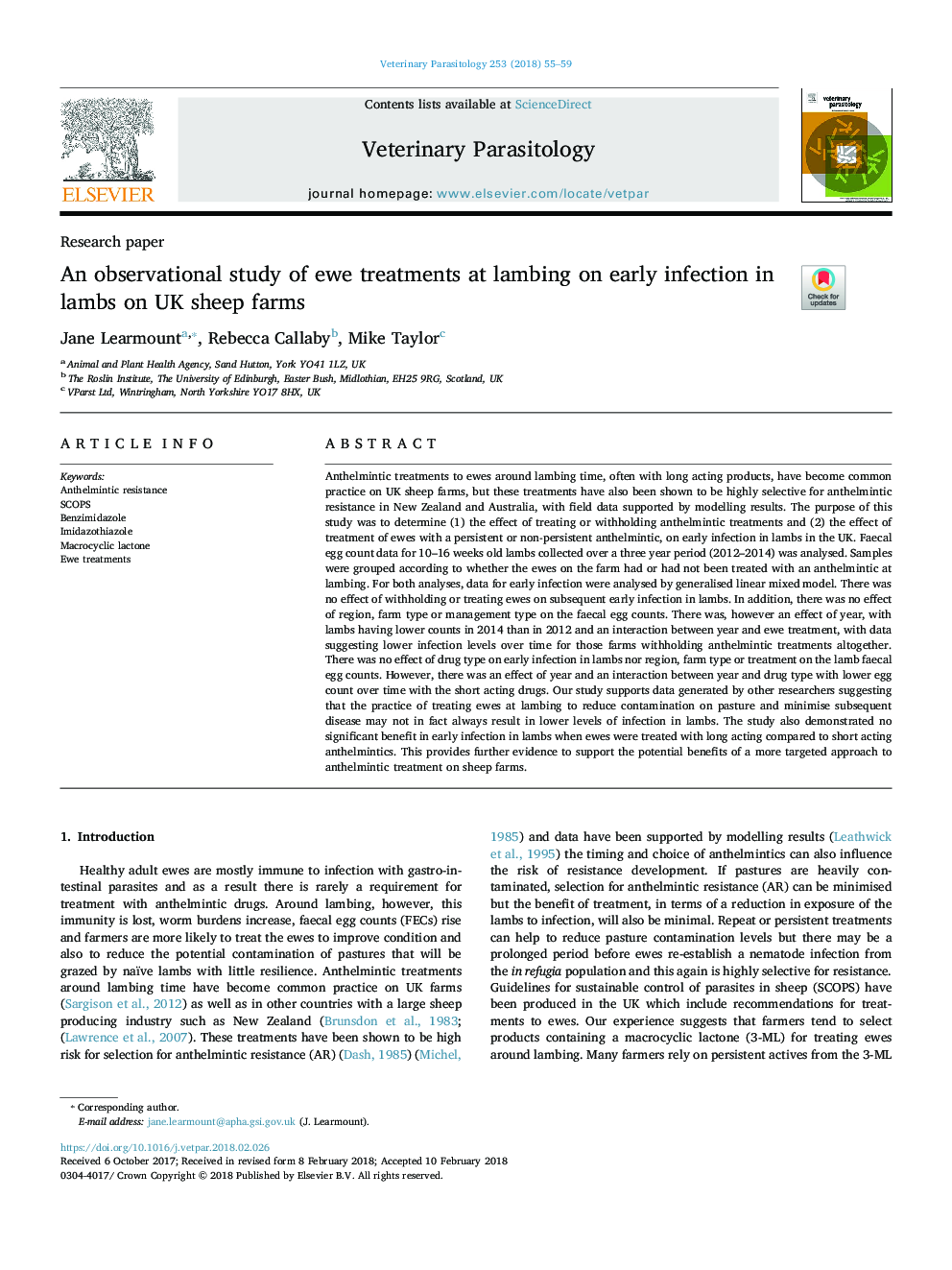| Article ID | Journal | Published Year | Pages | File Type |
|---|---|---|---|---|
| 8506063 | Veterinary Parasitology | 2018 | 5 Pages |
Abstract
Anthelmintic treatments to ewes around lambing time, often with long acting products, have become common practice on UK sheep farms, but these treatments have also been shown to be highly selective for anthelmintic resistance in New Zealand and Australia, with field data supported by modelling results. The purpose of this study was to determine (1) the effect of treating or withholding anthelmintic treatments and (2) the effect of treatment of ewes with a persistent or non-persistent anthelmintic, on early infection in lambs in the UK. Faecal egg count data for 10-16 weeks old lambs collected over a three year period (2012-2014) was analysed. Samples were grouped according to whether the ewes on the farm had or had not been treated with an anthelmintic at lambing. For both analyses, data for early infection were analysed by generalised linear mixed model. There was no effect of withholding or treating ewes on subsequent early infection in lambs. In addition, there was no effect of region, farm type or management type on the faecal egg counts. There was, however an effect of year, with lambs having lower counts in 2014 than in 2012 and an interaction between year and ewe treatment, with data suggesting lower infection levels over time for those farms withholding anthelmintic treatments altogether. There was no effect of drug type on early infection in lambs nor region, farm type or treatment on the lamb faecal egg counts. However, there was an effect of year and an interaction between year and drug type with lower egg count over time with the short acting drugs. Our study supports data generated by other researchers suggesting that the practice of treating ewes at lambing to reduce contamination on pasture and minimise subsequent disease may not in fact always result in lower levels of infection in lambs. The study also demonstrated no significant benefit in early infection in lambs when ewes were treated with long acting compared to short acting anthelmintics. This provides further evidence to support the potential benefits of a more targeted approach to anthelmintic treatment on sheep farms.
Related Topics
Life Sciences
Agricultural and Biological Sciences
Animal Science and Zoology
Authors
Jane Learmount, Rebecca Callaby, Mike Taylor,
